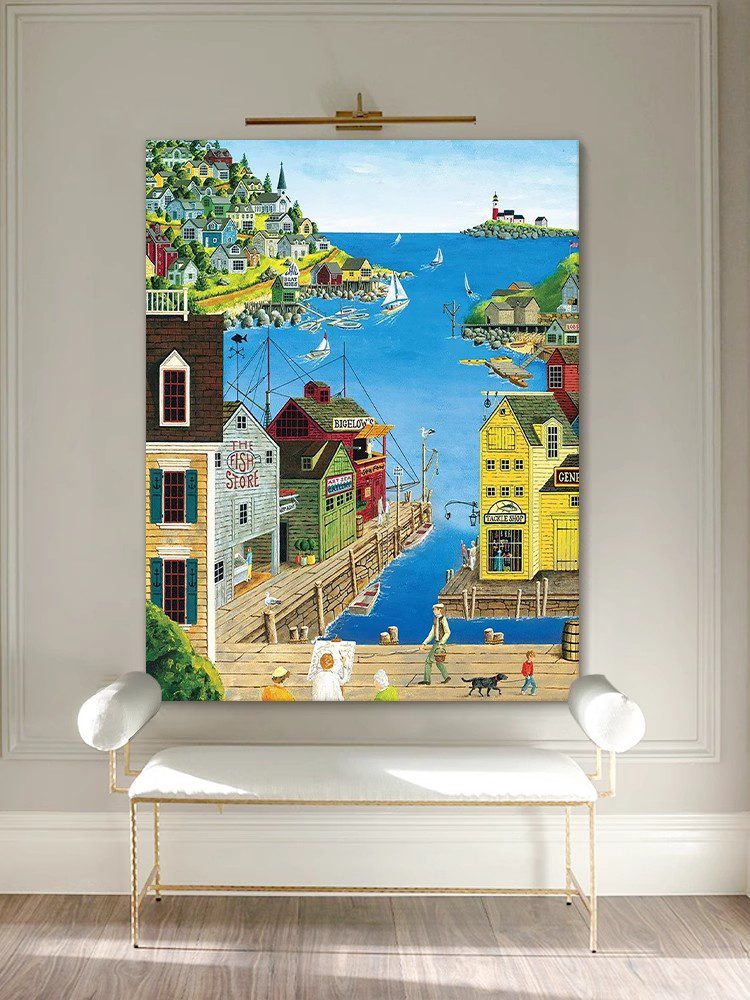Cubist hand-painted oil painting is an extremely innovative artistic style. The following is an analysis from several aspects including its origin and background, core features, expression techniques, development stages, representative works and influence:
Origin and background
Cubist oil painting originated in France in the early 20th century and was jointly initiated and developed by Pablo Picasso and Georges Braque. At that time, Einstein overturned the classical physical laws with the theory of relativity, scientists split the atom and invented X-ray vision, Darwin’s theory of biological evolution shook the view of human supremacy, Freud delved deeply into the human mind, and many sacred fundamental laws and concepts were challenged. Young artists began to re-examine traditional artistic views and techniques, and Cubism emerged as The Times require.
Core features
Multi-perspective presentation: Breaking away from traditional perspective and single perspective, objects are decomposed into geometric shapes, and these shapes are simultaneously presented from multiple angles to reconstruct the image of the objects. For instance, in Picasso’s “Les Demoiselles d ‘Avignon”, the frontal face is depicted with a side nose, while the side face is depicted with frontal eyes.
Emphasizing flatness: It tends to emphasize the flatness of the picture, avoiding the traditional sense of depth and three-dimensionality. It depicts a three-dimensional picture as a plane or a two-dimensional domain, such as the left side, right side, front and back of a person coexisting in the picture.
Geometric processing: Objects are simplified and abstracted into basic geometric shapes, such as cubes, cones and spheres. The objects are represented by the block features of geometric figures, making the objects exceed people’s previous visual acceptance experience and habits, and generating an abstract visual effect.
Expression techniques
Fragment splicing composition: The creator consciously organizes and arranges visual fragment images according to a certain structural form based on their own ideas. This composition form is called fragment splicing composition. The collage method also differs from traditional painting forms in the construction of time and space in the picture, and is called fragmented time and space.
Collage technique: Artists have newly created an artistic approach and language that uses real objects to collage picture graphics, further enhancing the texture changes of the picture and posing the question to people: Which is reality and which is illusion, nature or painting?
Development stage
Analysis of the Cubist stage: Before 1912, painters carried on Cezanne’s tradition of rational analysis of the structure of paintings, attempting to construct a painting-like spatial and form structure through the decomposition and reconstruction of space and objects. At this point, colors played a powerful role in the painting, but the forms were still fragmented, only larger and more decorative.
The Synthetic Cubism stage: After 1912, artists began to introduce more colors and collage techniques, making their works richer and more diverse.
Representative works
“Avignon’s Maiden” : Generally regarded as the first Cubist work, the bodies, postures and facial features of the five naked girls in the picture all break the traditional expression methods of painting, embodying the multi-perspective, geometric and planar characteristics of Cubism.
“Estak’s House” : A work by Braque, he shattered the original form of things, reorganized them, and pursued a sense of material reality. Traditional perspective rules were excluded, and the theme of the painting took a second place.
Influence
The influence on painting: Cubism marked a new era for modern art. It was further away from tradition than Fauvism, and its concepts and techniques were also more novel. Its innovative spirit provided reference and inspiration for later art schools.
The influence on sculpture and architecture: Cubism had a profound impact on sculpture and architecture in the 20th century. For instance, the structure of the Bird’s Nest in Beijing was influenced by Cubism. The intricate facade of the stadium and the geometric base of the building are integrated into one, just like “trees and roots” forming a huge architectural weaving body.
